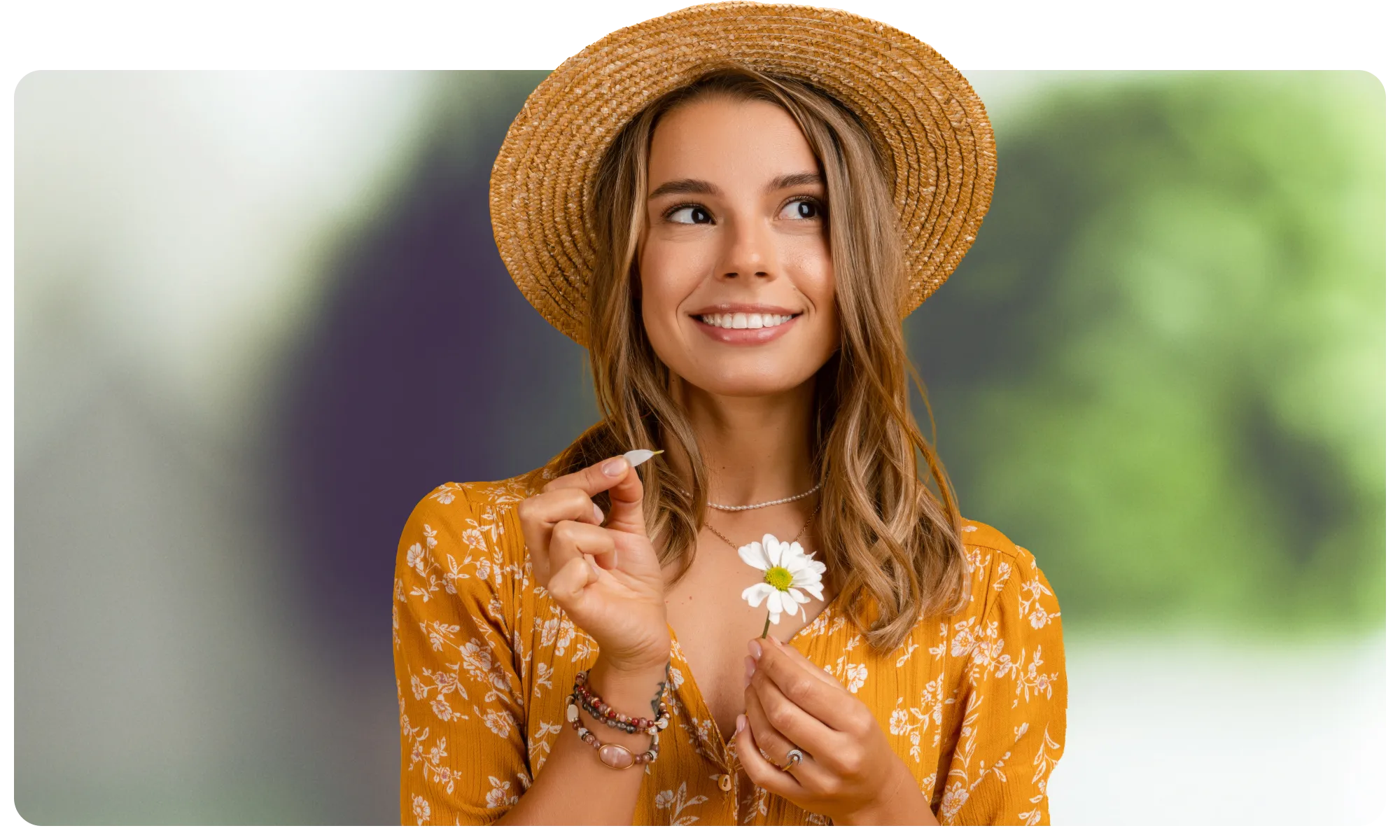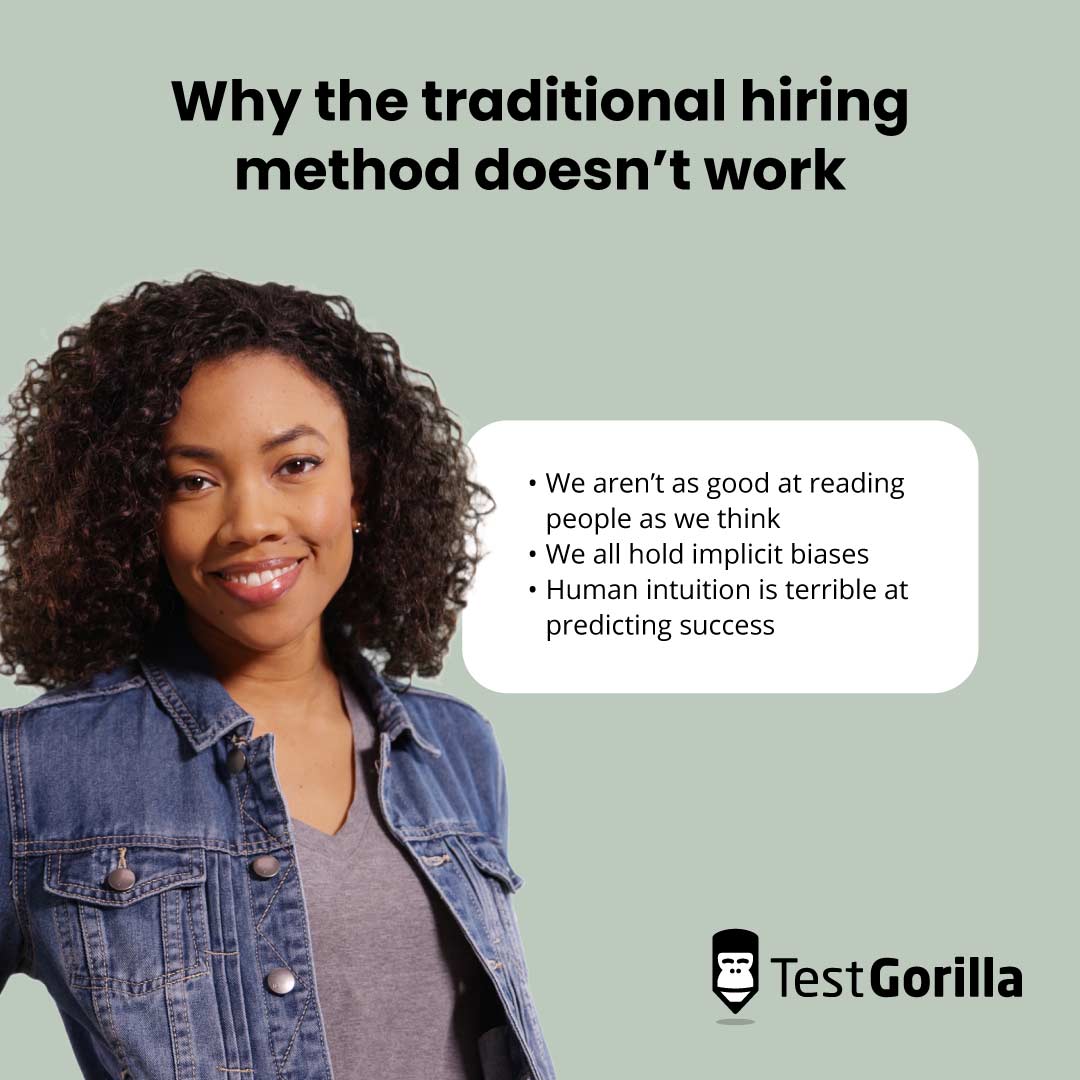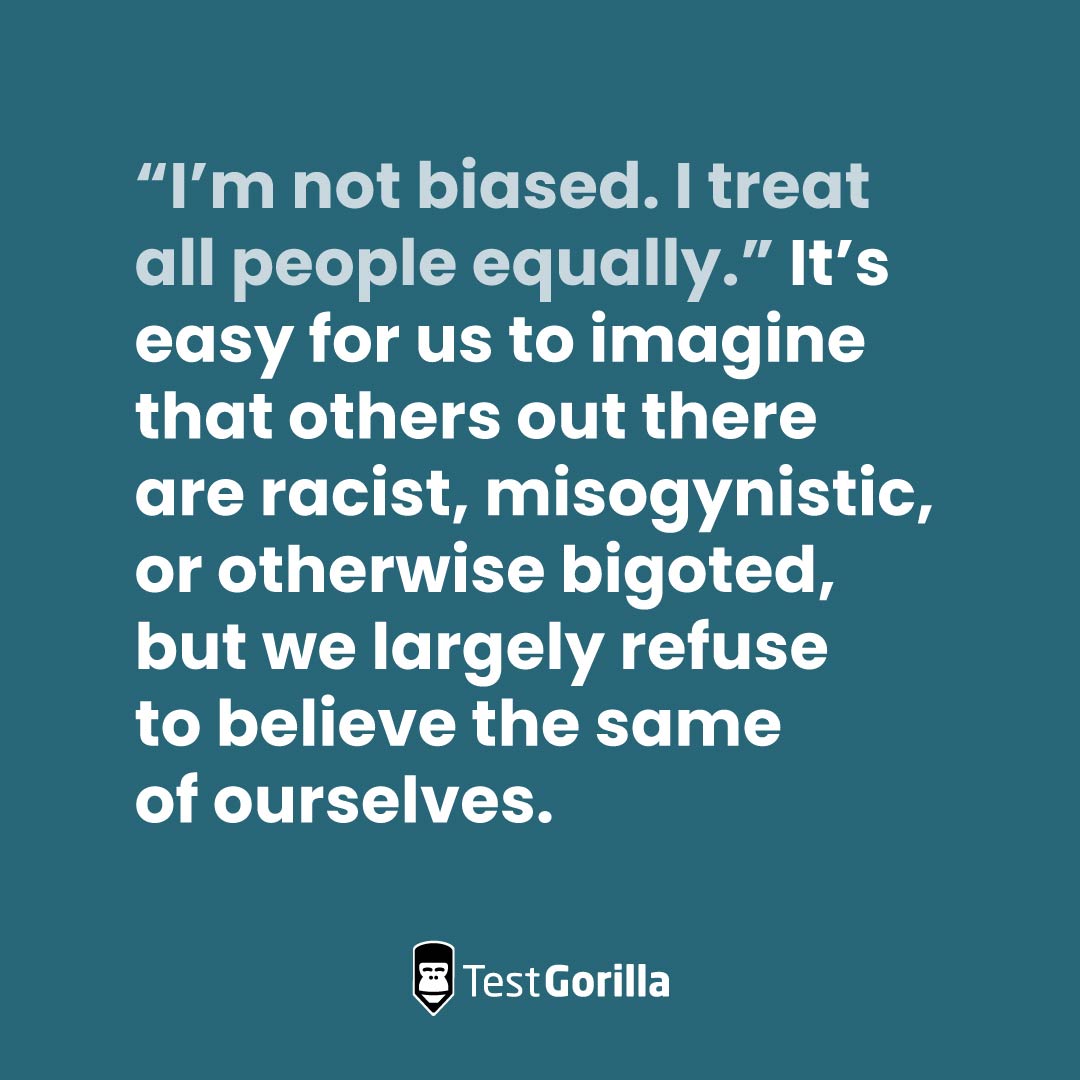Unconscious bias (also known as implicit bias) has been well-documented and discussed in academic circles for the past few decades.
But few have been as transformative and influential when it comes to informing the general public of such phenomena as Malcolm Gladwell, a prolific writer and journalist.
His best-selling books (Blink, Talking to Strangers, Outliers, The Tipping Point) take a collective look at human cognition’s strangest and most interesting aspects, from our surprisingly poor ability to parse outliers to the profound impact of chance on individual success.
Aside from making interesting bedtime reading, Gladwell’s findings have many real-world implications, particularly as they relate to recruiting the brightest talent and assembling a world-class team.
In this article, we’ll explore what Malcolm Gladwell’s writings mean for hiring.
They point toward the need to move away from traditional, subjective assessment forms like unstructured interviews, and toward a more structured model focused on skills.
Table of contents
An introduction to Malcolm Gladwell
First, let’s introduce you to Malcolm.
An English-born Canadian, Malcolm Gladwell is the son of a Jamaican psychotherapist mother and an English mathematician father.
His interest in the workings of the human mind, the importance of statistics in describing human behavior, and the impact of race and background on human interaction all likely draw from this particular nexus.
Professionally, Gladwell became known by writing for the Washington Post and later for the New Yorker, where he has been a regular contributor since 1996.
This work for the New Yorker served as a launching pad for his later, more wide-reaching writings.
His 1996 article, The Tipping Point (which explored a concept Gladwell refers to as “the moment of critical mass” and how ideas, products, and behaviors can quickly become mainstream) provided the basis for the book of the same name, published in 2000.
On the back of this success, Malcolm Gladwell has gone on to publish several best-sellers:
Blink (2005): an exploration of snap judgments, the good, the bad, and the ugly
Outliers (2008): a peek into what separates the highest performers from the rest of the pack
What The Dog Saw (2009): a collection of his popular New Yorker articles
David and Goliath (2013): an exploration of the struggle between favorites and underdogs
Talking to Strangers (2019): a look at when and why we struggle to accurately read strangers and even people we know
The Bomber Mafia (2021): a story of flights and fights
In this article, we are primarily drawing from three of Gladwell’s works (Blink, Outliers, and Talking to Strangers) and some of the New Yorker articles that paved the way for their writing.
The insights these three books deliver are deeply relevant to the hiring world and provide a glimpse into why the traditional hiring method doesn’t work. We’ll look at some of Gladwell’s fascinating insights into:
Why we’re so bad at reading people
The implicit biases we all hold that prevent us from hiring the right people
Our largely terrible intuition when it comes to predicting success
Why the traditional hiring method doesn't work
1. We aren’t as good at reading people as we think
A central theme across a lot (if not all) of Malcolm Gladwell’s books is that we just don’t know people like we think we do.
Although he touches on this theme across many works, it is most notably explored in Talking to Strangers, where Gladwell examines a phenomenon he calls “default to truth.”
The gist of this idea is that when interacting with others, our default assumption is that they are telling the truth, rather than lying.
The default to truth is evolutionarily adaptive – engaging in the necessary groundwork to soothe our skepticism would be too time-consuming to enable meaningful cooperation.
Of course, this “automatic trust” gets us into trouble and leaves us easily fooled by the more charismatic and sociopathic of humans.
In Talking to Strangers, Gladwell tells the story of Neville Chamberlain, the English prime minister who visited Hitler three times in September of 1938.
The impression Chamberlain came away with? Hitler was “a man who could be relied upon when he had given his word.”
We don’t need to say more about how wrong Chamberlain’s first impression was.
But what’s particularly interesting here is the evidence we seem to require to break that default to the truth.
Gladwell shows, we more readily brush off the signs of a liar, mole, or traitor as coincidence, and it’s not until the evidence against someone piles up that we (generally speaking) come to terms with the deception.
He notes that we’re only able to pick a liar when they’re exhibiting the most obvious signs of lying (sweating, stuttering, and telling inconsistent stories). When there’s a mismatch, we’re much less capable.
In Talking to Strangers, Gladwell discusses a study run by Tim Levine, a psychologist, that shows how bad we are at catching liars.
Participants in the experiment completed a test in which they went to a room with one other “participant” (who is an accomplice).
During the test, the administrator left the room and the accomplice urged the participant to cheat because the administrator had left the answers behind.
In a post-test interview, the administrator asked participants whether or not they cheated. Naturally, some lied. Things got even more interesting after this happened.
When the general public viewed videos of these interviews, it became immediately obvious that we are terrible at weeding out the liars from the truth-tellers.
Only when a lying participant stumbles over their words can we tell they are lying. But other than that, we’re lost.
What’s worse, when law enforcement agents (you know, those people who work at places like the FBI whose job is to interrogate suspects and weed out lies) watched those same interviews, they only caught an astonishing 14% of liars who came across as sincere.
They literally would have been better off just randomly guessing.
But it’s not only about our inability to catch a liar. Although we generally believe we’re great at getting a good read on a stranger during a first impression, the data says something different.
To illustrate this point, Gladwell looks at the judicial system.
Judges frequently state that when they decide at what level to establish a defendant’s bail, they find it highly important to look into the person’s eyes to gauge their character, level of remorse, and likelihood to reoffend.
Of course, as it turns out, this isn’t a reliable measure.
When Sendhil Mullanhtain, a Harvard professor, built an AI algorithm to perform the same job, his tool far outperformed the judge’s judgments about a defendant’s likelihood to reoffend and was much better at establishing reasonable bail levels.
In short, by removing that (as believed by the judges) all-important human element, the algorithm was better at creating a safe society and a fair judicial system.
Interesting insights, but what does all of this mean in the context of hiring?
If even our “experts” (judges, prime ministers, and detectives) are poor at reading people, we have to assume that our intuitions aren’t any better.
Unfortunately, most hiring managers rely on those intuitions when it comes to making hiring decisions like reducing the time to hire.
For the average recruiter, the traditional interview is the most influential aspect of the hiring process.
We know from the above, though, that the interview isn’t a reliable method for assessing an applicant’s suitability for a job. The data tells the same story.
When Schmidt et al. conducted their analysis of the effectiveness of prehiring assessment methods, the traditional unstructured interview came up far behind other approaches like work samples and testing centers for predictive validity.[1]
As alien as it may seem, if we want to build an objective hiring process that is free of the mistakes humans are prone to make when dealing with others, we need to take humans out of the equation as much as possible.
For the most part, that’s going to mean coming up with objective, self-led pre-employment tests that enable us to assess all applicants on an even playing field.
Get the lowdown on how to action this in our guide: How to adopt skills-based hiring practices in your organization.
2. We all hold implicit biases
One of the reasons behind our terrible ability to read people accurately and objectively is that we all hold implicit and unconscious biases.
These biases drive how we interact with and interpret the actions of others, and are another key point of focus for Malcolm Gladwell.
In Blink, a book about the incredible ability of humans to make rapid, snap judgments far before they’ve had the chance to cognitively process information, Gladwell explores the impact of unconscious bias on such interactions.
Gladwell focuses on both sides of the coin, exploring cases in which this rapid cognition is incredibly useful (it's an evolutionary adaptive response) and ones where it gets us into hot water.
Bias can be a touchy subject.
When we raise the notion that we might hold a bias (whether it be related to race, gender, or any other group category), the majority of us have a pretty strong reaction that often sounds like this:
“I’m not biased. I treat all people equally.”
It’s easy for us to imagine that others out there are racist, misogynistic, or otherwise bigoted, but we largely refuse to believe the same of ourselves.
The problem we (and Malcolm Gladwell) are concerned with, however, is not so much the existence of obvious and explicit bigotry (which is, obviously, not to say that this isn’t a problem) but the bias that is unconscious and implicit.
That is, they are biases we don’t know we hold.
And the unfortunate truth is, no matter how much we could strive to be even-handed, fair, and objectively minded when dealing with all people of all creeds, almost all of us hold some form of implicit bias.
Indeed, there is some evidence to suggest that in-group bias (a preference toward those who are similar to us) is evolutionarily adaptive.[2]
Unconscious bias as it relates to race is the most obvious point of analysis here.
In Blink, Gladwell talks about the Harvard Race Implicit Associations Test (IAT). The IAT is a series of association tests that examine reaction times in our ability to relate words, concepts, and races.
For instance, one of the things the Race IAT does is explore how quickly we connect words with negative connotations (crime, danger, anger) and positive connotations (professionalism, kindness, trust) with faces of different racial backgrounds (primarily Black and White faces).
The uncomfortable finding here is that we have much more readily associated White faces with positive words and Black faces with negative words than we have the other way around.
This association is persistent across participants from all races (though it is less prevalent among Black participants than White ones, pointing perhaps to an interaction with an in-group bias) and continues to show up no matter how much participants try to be unbiased during the test.
But Gladwell exposes some novel examples of how unconscious bias affects how we interact with others in society and just how pervasive such biases are:
Wendy Levinson, a medical researcher, found that the biggest driver of suing doctors for malpractice wasn’t whether something went wrong during the process but whether or not the patient liked their doctor. In some cases, patients chose to pursue a lawsuit against one practitioner when it was abundantly clear that the other was at fault, based on the interactions they had with each.
President Harding (who is now widely regarded as one of the worst US presidents of all time) was essentially elected to office because he “looked like a president” with broad shoulders and a commanding presence that made him
see like a leader, despite any other evidence to support the notion.
The overwhelming majority of chief executive officers are far above the average height, reflecting an unconscious bias toward tall people. We also pay tall people more. When comparing salaries, each additional inch was worth an extra $789 a year.
[3]
These findings could seem like comical dinner banter, but they have profound and uncomfortable implications for hiring.
At the lowest level, they mean we can’t trust our judgments about applicants.
Owing to widely-held biases such as these, we can’t know whether we are unconsciously giving an advantage to someone who is more charismatic, taller, better spoken, or sharing our accent.
The implicit biases we hold reflect subtly on how we interact with others, which can have an effect on how they interact with us.
For example, in Blink, Gladwell explains how we change our behavior and body language when interacting with people from other races, with subtle changes to:
How much and how often we smile
How closely we sit to the other person
How open or closed our body language is
How much we lean in during conversation
These subtle cues are picked up subconsciously by the other person, which can quickly reduce their confidence and make them less friendly and more defensive.
Their reaction then impacts the impression of them you walk away with. Vicious cycle, huh?
The best move here is to anonymize the hiring process as much as possible and to establish automated, objective decision-making processes that minimize the ability of your implicit biases to take control of hiring choices.
At the most extreme end, you might choose to do away with traditional interviews together and replace them with a self-led skills testing series.
Then, you could follow these skills assessments up with an anonymous written interview, in which each applicant (who passed the previous round) is given a series of structured questions to answer.
You can then assess the applicant’s answers to those questions using a predetermined criteria set.
The entire recruitment process is absent of the potential for biases related to race, accent, gender, disability status, or any other group identity (because you won’t be aware of it in the first place).
3. Human intuition is terrible at predicting success
As you can probably tell, Malcolm Gladwell is a touch obsessed with the things we think we’re good at, but in reality, we’re terrible at.
The third and final point we’re covering in that vein is the crux of his book Outliers: We’re just not that good at predicting who or what will be successful.
Outliers is a book about the hyper-successful. It explores what separates successes in tech, sports, and other pursuits from the majority of those who do just fine in their fields.
In particular, it looks at the profound impact of luck in creating success, from the chance encounters that led to Bill Gates gaining insane amounts of access to advanced technologies to the ridiculous role birthdates play in forging the fastest, strongest, most highly-skilled athletes.
Most interesting from the hiring perspective is the notion that the metrics and measures we use to predict success often aren’t valid, a point Gladwell explores primarily through the lens of sport, which carries over nicely into the corporate realm.
As he details in his New Yorker article, “Malcolm Gladwell on the Challenge of Hiring in the Modern World,” one of the key metrics tested when scouting basketball players is how high they can jump.
And there is variation. Some can jump 40 inches, and others can only jump 25. You’d think this huge difference would matter a lot, as do the people using it as a metric to select future players.
But, as it turns out, how high a player can jump ends up having no impact on their future success.
Similarly, in another New Yorker article titled “Most Likely To Succeed,” Gladwell shares the results of a football player recruitment analysis by Berri and Simmons.
They found no connection between a given quarterback being taken in the draft (essentially a measure of how scouts view their long-term potential based on college performance) and how they performed in the pro leagues.[4]
In short, even our experts are terrible at reading humans.
The “mismatch problem,” as Gladwell terms it, is at the core of a lot of bad hires.
The implication of these findings for recruitment is, quite simply, that to make effective hiring decisions, we have to be able to accurately define the skills and attributes that lead to success and then test them objectively.
We can’t rely on our implicit assumptions about what makes a future high performer.
Instead, it’s best to test for hard skills up front and stable long-term characteristics using personality tests to establish fit with the role and company working style.
From there, it’s about long-term development plans and setting up the employee for success through training and support.
If you want to find out more about this matter, check out our guide: Your hiring team’s guide to learning and development.
Skills-based hiring: The antidote to Gladwell’s findings
With all of Malcolm Gladwell’s evidence suggesting that maybe we aren’t good at reading people, where does that leave the humble hiring manager?
If unconscious biases and lackluster intuition lead to poor hiring decisions and discrimination against out-group applicants, maybe we should remove ourselves from the hiring process and design self-led, objective, science-driven selection criteria to drive the decision-making process.
To help you get there, we’ve built a dedicated guide to how online skills testing can help free you from implicit bias and drive better hiring decisions that fuel business growth: Your hiring team’s guide to pre-employment skills testing.
You can also check out our test library to get a better feel for skill-based hiring and choose between more than
Sources
McDaniel, Michael A.; Schmidt, Frank L; Whetzel, Deborah. (August 1994). “The validity of employment interviews: A comprehensive review and meta-analysis”. The Journal of Applied Psychology. Retrieved April 29, 2023.
Feng, Fu; Masuda, Naoki. (March 2015). “Evolutionary models of in-group favoritism”. National Library of Medicine. Retrieved April 29, 2023.
Cable, Daniel M.; Judge, Timothy A. (July 2004). “Standing tall pays off, study finds”. The Journal of Applied Psychology. Retrieved April 29, 2023.
Gladwell, Malcolm. (December 2008). “Most likely to succeed: How do we hire when we can’t tell who’s right for the job?”. The New Yorker. Retrieved April 29, 2023.
Related posts
Hire the best candidates with TestGorilla
Create pre-employment assessments in minutes to screen candidates, save time, and hire the best talent.
Latest posts
The best advice in pre-employment testing, in your inbox.
No spam. Unsubscribe at any time.

Hire the best. No bias. No stress.
Our screening tests identify the best candidates and make your hiring decisions faster, easier, and bias-free.
Free resources
This checklist covers key features you should look for when choosing a skills testing platform
This resource will help you develop an onboarding checklist for new hires.
How to assess your candidates' attention to detail.
Learn how to get human resources certified through HRCI or SHRM.
Learn how you can improve the level of talent at your company.
Learn how CapitalT reduced hiring bias with online skills assessments.
Learn how to make the resume process more efficient and more effective.
Improve your hiring strategy with these 7 critical recruitment metrics.
Learn how Sukhi decreased time spent reviewing resumes by 83%!
Hire more efficiently with these hacks that 99% of recruiters aren't using.
Make a business case for diversity and inclusion initiatives with this data.




















